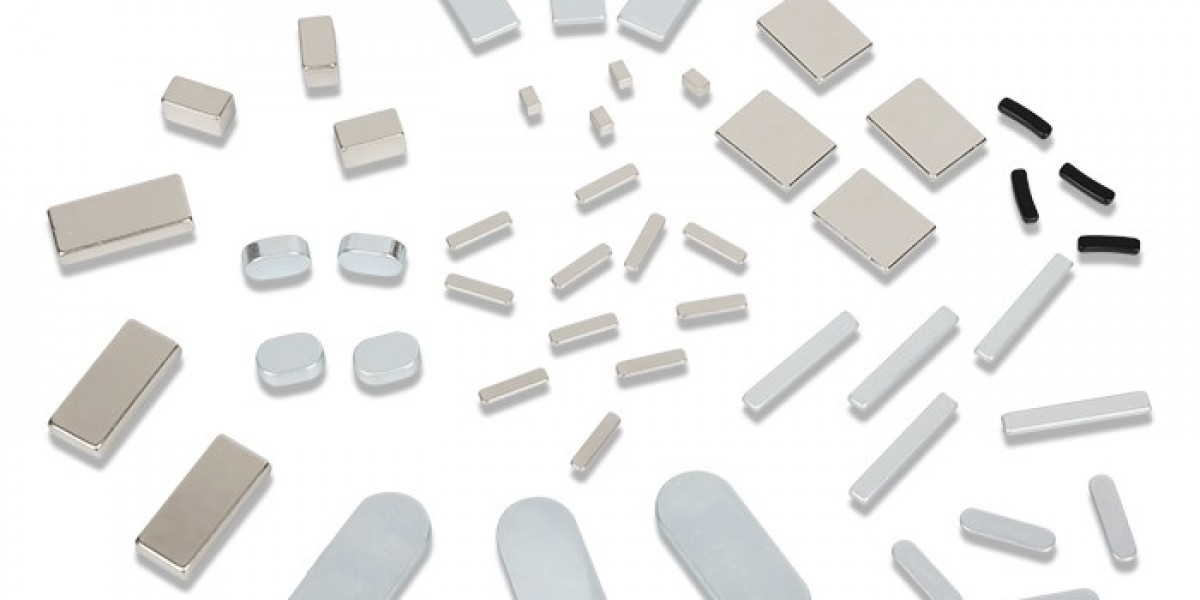Introduction:Sintered NdFeB magnets, also known as neodymium-iron-boron magnets, are a remarkable class of permanent magnets that have revolutionized the field of magnetism. With their exceptional magnetic strength, high energy density, and wide range of applications, these magnets have become the go-to choice for engineers and scientists across numerous industries. In this article, we will explore the world of sintered NdFeB magnets, delving into their composition, unique properties, manufacturing process, and the revolutionary impact they have made in various fields.
Unveiling the Composition of Sintered NdFeB Magnets,We will start by providing an overview of the composition of sintered NdFeB magnets, discussing the key elements that make up these powerful magnets. With neodymium, iron, and boron as the primary constituents, their alloying and mixing ratios have a direct impact on the magnet's properties. We will explore the role of minor additives and the influence they have on the magnet's performance and stability.
The Astonishing Properties of Sintered NdFeB Magnets,Sintered NdFeB magnets possess a unique set of properties that sets them apart from other magnet materials. We will delve into their exceptional magnetic strength, high coercivity, and energy product, contributing to their wide range of applications. Additionally, we will discuss their resistance to demagnetization, temperature dependence, and the impact of grain size, shape, and alignment on the overall magnet performance.
The Process of Sintering: An Art and Science,The manufacturing process of sintered NdFeB magnets is a complex blend of art and science. We will explore the key steps involved, including the production of raw materials, alloying, milling, compacting, and sintering. We will uncover the intricacies of the sintering process, which involve subjecting the compacted magnets to high temperatures under controlled conditions to achieve the desired microstructure and magnetic properties.
Surface Treatment: Protecting and Enhancing Performance,To enhance their performance and protect against corrosion, sintered NdFeB magnets undergo various surface treatment processes. We will discuss methods such as electroplating, passivation, and coatings that are applied to the magnets to ensure their durability and longevity in various environments. Additionally, we will explore the influence of surface treatment on the magnet's appearance, adhesion, and resistance to wear.
Applications Across Industries,Sintered NdFeB magnets have revolutionized numerous industries, enabling technological advancements and innovative solutions. We will explore their applications in industries such as automotive, electronics, renewable energy, medical devices, and aerospace. From powering electric vehicles and hybrid vehicles to enabling efficient wind turbines and MRI machines, sintered NdFeB magnets have become the backbone of modern technology.
Challenges and Ongoing Research,While sintered NdFeB magnets offer exceptional benefits, they also present challenges. We will discuss the environmental concerns associated with the mining and disposal of neodymium and the ongoing efforts to improve the sustainability of these magnets. We will explore the exploration of alternative rare-earth materials, magnet designs, and manufacturing techniques that aim to reduce reliance on critical raw materials and mitigate environmental impacts.
Pushing the Boundaries: Advances in Sintered NdFeB Magnets,The field of sintered NdFeB magnets is constantly evolving, driven by research and development efforts to push the boundaries of their performance. We will discuss emerging trends and advances, such as the development of anisotropic magnets, magnetization techniques, and the investigation of new alloy compositions. These advancements are paving the way for even higher magnetic strength, enhanced temperature stability, and improved sustainability.
Conclusion:Sintered NdFeB magnets have forever transformed the world of magnetism, offering unparalleled magnetic strength, high energy density, and versatility. Their exceptional properties have catalyzed innovation and progress in various industries, driving advancements in technology, energy generation, and healthcare. As research and development continue to accelerate, the future holds immense potential for sintered NdFeB magnets, promising even more groundbreaking applications and sustainable solutions. Their revolutionary impact and ongoing advancements position them as key enablers of progress, unlocking new frontiers of innovation across multiple sectors.








